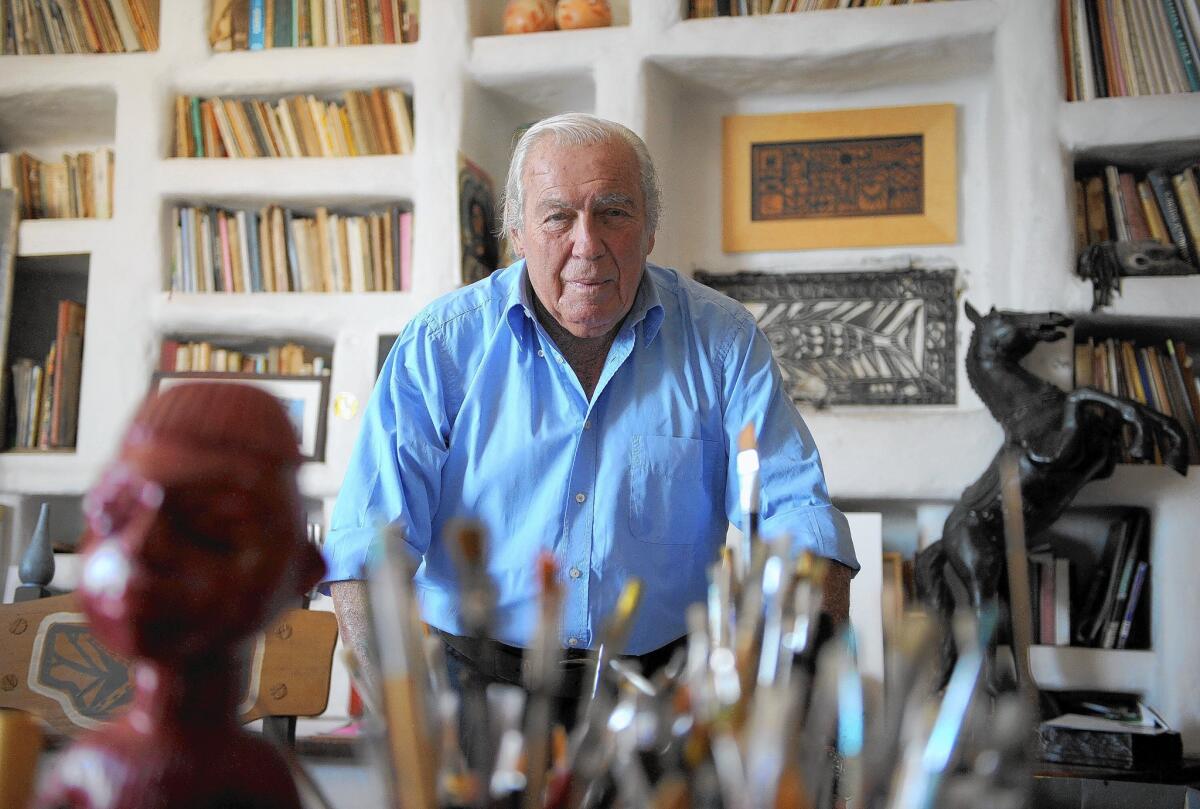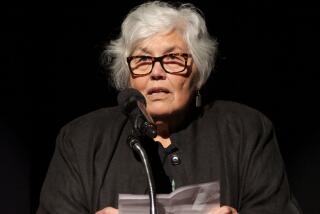Carlos Paez Vilaro dies at 90; Uruguayan mural artist and musician

Carlos Paez Vilaro, a self-trained painter, sculptor, screenwriter, musician and architect who championed Afro-Uruguayan Candombe music and dance, created colorful murals in dozens of cities around the world, and built a huge “living sculpture” that became an iconic 50-room hotel, died Monday in Uruguay. He was 90.
The prolific artist died at home in Casapueblo, the sprawling four-star hotel outside Punta del Este that included his workshop and a museum. The white building includes unusual organic forms that bring to mind Salvador Dali’s labyrinthine home on the Costa Brava of Spain, or some of Antoni Gaudi’s buildings in Barcelona.
Paez Vilaro worked until his dying day, and “was lucid, impeccable, a model for everyone,” his son, Carlitos, told Uruguay’s Channel 12.
Only nine days earlier, the artist banged his drums and marched with his beloved “Llamadas” group, the most traditional of Uruguay’s carnival culture, in which Afro-Uruguayans and whites wearing blackface dance to the rhythms of Candombe, a music brought by slaves from Africa.
Paez Vilaro, who was white, was born in Uruguay’s capital of Montevideo on Nov. 1, 1923. As a young man, he immersed himself in the culture of black Uruguayans, whose traditions would inspire much of his life’s work. Candombe was socially unacceptable in the 1940s, and is celebrated in Uruguay now thanks in no small measure to Paez Vilaro’s art and advocacy.
One of Paez Vilaro’s most difficult times came in the winter of 1972, when a plane carrying his son Carlitos and other members of his Uruguayan rugby team crashed high in the Chilean Andes. Authorities eventually abandoned the search, but Paez Vilaro never gave his son up for dead. Finally, after 72 days, the painter’s son was found among the 16 survivors whose ordeal was retold in the movie “Alive.”
The artist’s huge, colorful murals can still be appreciated in dozens of public buildings around the world, including the headquarters of the Organization of American States in Washington, and Argentina’s National Library in Buenos Aires. Convinced that color can relieve pain, he painted numerous murals in hospitals, notably Chile’s Hospital de San Fernando and Georgetown University Hospital in Washington.
He also got a screenwriting credit for “Batouk,” a documentary about African dance that closed the 1967 Cannes Film Festival.
More to Read
Start your day right
Sign up for Essential California for the L.A. Times biggest news, features and recommendations in your inbox six days a week.
You may occasionally receive promotional content from the Los Angeles Times.






